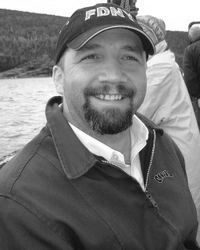Biography:Joseph Brant Arseneau
This article provides insufficient context for those unfamiliar with the subject. (November 2012) (Learn how and when to remove this template message) |
Joseph Brant Arseneau (born September 3, 1967) is generally known in finance and technology for first formally defining finance techniques for third world housing by describing the securitization of excess cash flow from renewable energy with the use of Renewable Energy Derivatives.[1]
The technique was first based on microfinance methods and it continues to gain popularity as both financial and technical infrastructure matures.[2] His team was also involved in the development of the Renewable Energy Derivative, which is a structured product that securitizes renewable energy into property-based debt obligations backed by the cash flows of excess energy. Thus providing a responsible use of the environment to finance properties in third world countries.
The method was initially intended to finance lower income housing in developing countries by replacing the credit risk with the operational risk of the renewable energy assets' capability to generate predictable cash flows. The financing is structured so that the risk is to be underwrite until the cost of the houses can be claimed by the banks. The new method includes operational risk transfer and mitigation through insurance, weather derivatives and "world class" preventive maintenance[3] programs.
Arseneau's primary area of technical expertise is in biologically-inspired systems called computational intelligence,[4] which include: neural networks,[5] genetic algorithms, fuzzy logic, swarm intelligence, and intelligent agents. His interest in computational intelligence began with his research into the application of neural networks to software reengineering;[6] that research went on to form the foundation to a patent being awarded to Raymond Obin and Brian Reynolds for a commercial reenginering process.[7]
His primary area of business expertise is in capital markets including; high performance computing[8] for trading, new securitization methods, derivatives, and financing techniques in developing economies. His work on high-frequency trading[9] has been leveraged by several academic research efforts[10] and more recently a commercial venture. His earlier research on computational intelligence and reengineering (software) is frequently cited.[11][12][13][14]
References
- ↑ Property financing in developing countries through asset-backed micro-financing, posted on the blog, Advanced Financing Techniques & Technology on Feb 8, 2007.
- ↑ Renewable Energy Derivatives: Securitizing Surplus Renewable Energy to Finance Housing , a 2007 working paper submitted to the Journal of Finance and Banking on Aug 10, 2009.
- ↑ System and Method of Preventitive Maintenance in Distributed Renewable Energy Networks, US Patent Pending 61237570.
- ↑ Reengineering Software Modularity using Artificial Neural Networks, 1994 INNS World Congress on Neural Networks, Conference Proceedings, Page(s): 467-469.
- ↑ Arseneau, J. B.; Spracklen, T. (1994). "An Artificial Neural Network Based Software Reengineering Tool for Extracting Objects". IEEE World Congress on Computational Intelligence 1994. 6. pp. 3888–3893. doi:10.1109/ICNN.1994.374832.
- ↑ SORT: A Software Reengineering Workbench for Evaluating the Application of Neural Networks to Reverse Engineering and Software Maintenance, the 4th Reengineering Forum: Reengineering in Practice, 1994.
- ↑ Method for Compiling a Procedural Program to an Object Class Definition, US Patent 6526569 awarded on March 6, 1997.
- ↑ HFT Requires High-Performance Computing Systems to Achieve Low Latency, posted on the blog, Electronic Market Microstructure on July 9, 2009.
- ↑ "At the Edge of Trading: Analyzing High Frequency Time-Series Data in Real-Time using Computational Intelligence", 2006. CiteSeerx: 10.1.1.76.573
- ↑ A Parallel Workflow for Online Correlation and Clique-finding with Applications to Finance, Camilo Rostoker's 2007 master thesis submitted to the University of British Columbia.
- ↑ Identification Des Objets Dans Un Code Prodecural Basee Surla Decomposition De Graphes, Francois Dumont's 1997 masters thesis at the University of Sherbrooke.
- ↑ Computational intelligence in software engineering, Witold Pedrycz and J. F. Peters's 1998 book in The Advances in Fuzzy Systems, Applications and Theory Series.
- ↑ Self-organizing Maps, By Teuvo Kohonen, 2000.
- ↑ Using OO design to enhance procedural software, M Chessell and F Civello, 1999.


